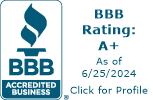The Spring Fever Phenomenon: Record Early Bookings Create Fence Installation Bottleneck (How to Jump the Line and Save)
This morning, while most people were hitting snooze or scrolling mindlessly through their phones, I was witnessing something magical...
The Harbinger of Spring
The official harbinger of spring made his grand entrance in my town. There he was—one lone red-winged blackbird, perched regally in a tall tree right above the stream cutting through the center of town. Then I looked up and spotted six more of his buddies, lined up like sentinels on the telephone wires overhead.
A Friendly Competition
My friend Rebecca, who lives about an hour and a half away, and I have this little contest every year—who spots the first red-winged blackbird? She saw one Saturday, but I'm the first to hear one this season. Victory is mine!
This friendly competition holds a special place in my heart. Rebecca was one of the first people I met after moving from Georgia to New Hampshire. We were out walking one late winter day when she pointed out a red-winged blackbird—something I'd never seen or heard before, despite them possibly living in Georgia too. Ever since that day, these distinctive birds have always reminded me of Rebecca and that new beginning in New Hampshire.
The Rush for Spring Installations
But here's what's really interesting... Our fence installers are already booking up fast this year. People have spring fever bad after all that snow we've had.
Funny thing is—my yard is still completely buried under snow. Can't see a single patch of bare ground anywhere. But it doesn't matter one bit.
The sun is noticeably warmer, sitting much higher in the sky these days. And those red-winged blackbirds? They know. Spring isn't just coming—it's practically pounding on the door.
Why This Matters to You
Here's why this matters to you... The early scheduling rush means if you wait until you can actually see your property's fence line needs, you might be pushed to mid-spring or even later for delivery.
And here's the kicker—material prices are increasing every week right now because of the tariffs. What costs X today may cost X+15% in just a month. That's real money walking out the door if you delay.
Smart property managers—especially those handling zoos, parks, and DOT projects—are locking in their fence work now, while there's still snow on the ground.
Secure Your Spring Products Now
Don't let spring fever catch you unprepared. Terry, our fence expert with decades of hands-on experience, is standing by to help you secure your spring products. She's seen this pattern year after year and knows exactly how to prioritize your needs.
Call Terry directly at 978-486-3116 and mention the "red-winged blackbird alert" for a 5% discount off the product.





.jpeg?width=891&height=821&name=Gemini_Generated_Image_naofcenaofcenaof%20(1).jpeg)






